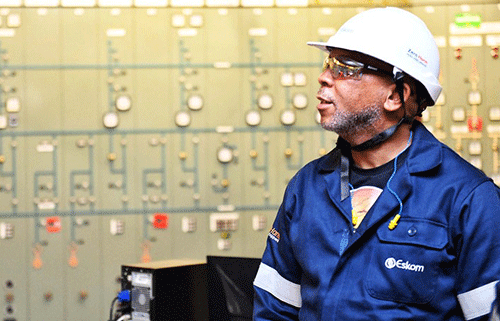South Africa’s electricity minister Kgosientsho Ramokgopa last week said Namibians should not have sleepless nights worrying when the lights will go off, as his country will continue providing electricity despite their own load-shedding challenges.
Keeping the lights on during 2023 and beyond has been a recurring concern for domestic industries and households.
Namibia’s generation mix primarily comprises hydropower and renewable energy. But the country still imports the majority of its electricity demand, about 60%, from South Africa’s Eskom and to a lesser extent the Southern Africa Power Pool (SAPP).
Ramokgopa gave the assurances last week during a media briefing in Windhoek after concluding a meeting with his counterpart, mines and energy minister Tom Alweendo.
“Namibians should not worry. We are not going to cut our electricity supply to your country. We are making significant strides. On the generation side, we are registering significant improvements in the performance of the units that are giving us electricity in the country. We are also seeing that there is a big drive by the private sector to contribute to new generation capacity, especially on the renewable energy side. And part of the strategy is to engage with neighbouring countries to the extent that they’ve got access to generating capacity, and we want to import that into the country,” he added.
The South African minister visited Namibia to cement the strong relationship between the two countries. Last week’s high-level meetings focused particularly on the areas of green hydrogen, infrastructure and possible collaboration on the Kudu gas field.
The visiting minister noted that the two countries have a symbiotic relationship, manifested by the fact that South Africa still continues to provide electricity to Namibia, even in the midst of its own well- documented energy and electricity problems.
He further said conversations are expanding to tackle regional energy challenges.
This is as all countries where Namibia imports power from, namely Zambia, South Africa and Zimbabwe, are experiencing load-shedding. While this has not yet impacted Namibia’s own security of supply, increasingly unreliable supply would have serious implications for overall domestic industries and their productive capacity.
Meanwhile, as Namibia awaits the full benefits of renewable energy options such as green hydrogen, wind and solar, the Kudu Gas-to-Power project remains a viable solution on the table.
For the last financial year ending 30 June 2022, Namibia’s total energy demand was 3 983GWh.
For the same year under review, Namibia’s total imports were 71% of the total energy demand, of which 256GWh was sourced from the SAPP, while the remainder was sourced from bilateral agreements with ZESCO (Zambia), ZPC (Zimbabwe) and Eskom.
Alweendo observed that last week’s visit by the South African minister is even more important, given energy deficits that have gripped not only South Africa, but the entire region.
“We all know that we don’t have enough energy, especially electricity. And therefore, the visit was really for us to start to think about how do we as a region, developed in a similar fashion in terms of closing that deficit. We had discussions around the issue of infrastructure, and how to wheel electricity between the two countries. We also had discussions around the development of the Kudu Gas-to- Power project. The discussion centred around how SA can be part of that development,” he added.
Caption:


